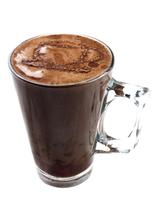Can the same kind of coffee beans be blended with different roasting degrees?
Baking is also related to the birthplace of Espresso. Espresso is a coffee extraction method that originated in Italy. At the end of the 19th century and the beginning of the 20th century, when Espresso extraction was born, Italy was not a rich country in Europe. Due to its own economic strength, the popular coffee in Italy was not of high quality, and most of them drank inferior robusta coffee. Robusta coffee contains unpleasant earthy taste and strong astringent taste. in order to cover up this bad taste, the coffee roaster chose the re-baking method to cover up the bad flavor of the coffee at the cost of losing part of the coffee flavor. This tradition continues to this day, and many people insist that authentic espresso should be served with robusta coffee. Even big brands of espresso beans like Lavazza make no secret of their love of robusta coffee, just like ILLY has begun to avoid the experience of using robusta beans in its blending in recent years. Especially at the moment of the rise of the concept of boutique coffee, as a coffee specialty store, it still insists on taking boutique coffee as the quality assurance, with hand-brewed coffee as the representative of the extraction method that emphasizes the flavor of the place of origin, which usually uses medium-to-deep roasting for coffee beans, while for Espresso, non-re-roasting is not enough to reflect the perfection of Espresso taste. The baking degree of most Espresso beans is in the re-baking stage after the peak of the second explosion.
On the one hand, this baking degree is due to the extraction principle of Espresso. The extraction of Espresso is completed in 25 to 30 seconds. In order to completely extract the essence of coffee in such a short time, the caramelization reaction must be carried out more fully from the beginning of baking, the formation of coffee aromatic oil is more thorough, and the coffee aromatic oil can reach the surface of coffee cells as much as possible by means of re-baking. In order to achieve the acquisition of essence in the limited extraction time. Espresso requires a deeper baking degree that is different from other extraction methods. Baking can be divided into light baking, medium baking, and deep baking. In addition to this simple classification, there is a more complex classification of SCAA baking, including shallow baking, medium baking, deep baking, and re-baking a cup of perfect Espresso starts with blending. The perfect Espresso requires sweetness, and the overall taste will be balanced, with a perfect balance of bitterness, acidity, sweetness and finish. This is a task that can not be accomplished by a single coffee bean, so in order to get a perfect Espresso, we must first have a perfect coffee bean matching scheme, which refers not only to the collocation of coffee beans from different places, but also to the coordination between the different roasting degrees of the same kind of coffee beans, whether it is the collocation of coffee beans from different places or the different roasting degrees of coffee beans from the same place. There is only one principle of blending to achieve the final balance of Espresso coffee taste.

Important Notice :
前街咖啡 FrontStreet Coffee has moved to new addredd:
FrontStreet Coffee Address: 315,Donghua East Road,GuangZhou
Tel:020 38364473
- Prev

Introduction to the knowledge, methods and baking methods of coffee blending
Espresso coffee is not a simple jigsaw puzzle. A certain type of coffee is sour and a certain type of coffee is bitter, and then the taste is balanced when put together. The taste is only experienced in the mouth, accounting for only 20% to 30% of the overall coffee taste evaluation. Do not ignore other flavor characteristics produced by the superposition of flavor. I hope you can do one thing when you make a concentrated match.
- Next

Cappuccino mixed coffee introduces the requirements of coffee blending.
Cappuccino Coffee-cappuccino coffee was developed at the same time when the Italian Archibucha invented the steam pressure coffee machine in the early 20th century. Cappuccino is an Italian coffee mixed with the same amount of Italian espresso and steamed milk. The color of the coffee is like a cappuccino monk covering a dark brown coat with a headscarf.
Related
- Does Rose Summer choose Blue, Green or Red? Detailed explanation of Rose Summer Coffee plots and Classification in Panamanian Jade Manor
- What is the difference between the origin, producing area, processing plant, cooperative and manor of coffee beans?
- How fine does the espresso powder fit? how to grind the espresso?
- Sca coffee roasting degree color card coffee roasting degree 8 roasting color values what do you mean?
- The practice of lattes: how to make lattes at home
- Introduction to Indonesian Fine Coffee beans-- Java Coffee producing area of Indonesian Arabica Coffee
- How much will the flavor of light and medium roasted rose summer be expressed? What baking level is rose summer suitable for?
- Introduction to the characteristics of washing, sun-drying or wet-planing coffee commonly used in Mantenin, Indonesia
- Price characteristics of Arabica Coffee Bean Starbucks introduction to Manning Coffee Bean Taste producing area Variety Manor
- What is the authentic Yega flavor? What are the flavor characteristics of the really excellent Yejasuffi coffee beans?

